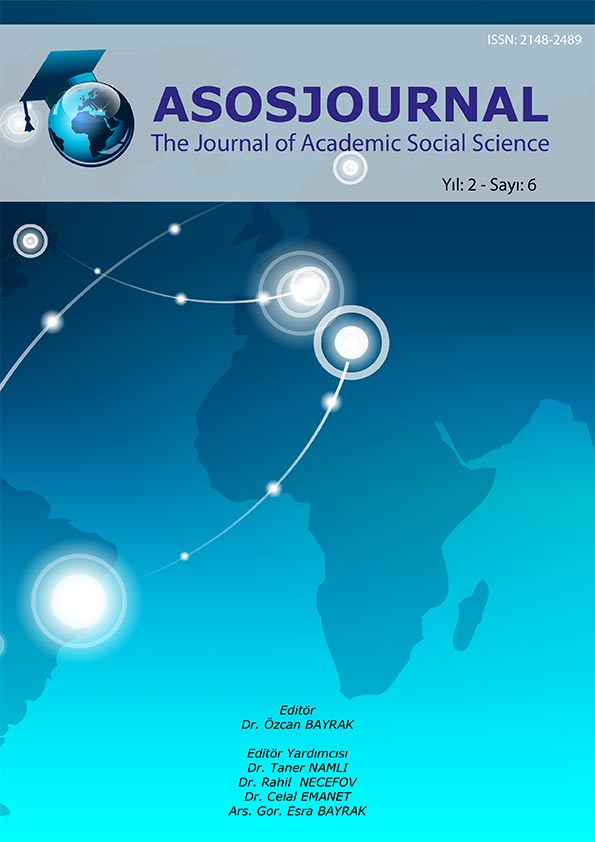Author :
Abstract
Erzurum Doğu Anadolu Bölgesinin kuzeydoğu kesiminde, Erzurum-Kars bölümünün batı yarısında yer alır. Burası Asya’dan Avrupa’ya, kuzeyden güneye geçişin en önemli kapılarından biri olmuş, Kanuni Sultan Süleyman’ın emriyle 1540’da Erzurum beylerbeylik olmakla, doğudaki ve batıdaki genişleme hareketlerine istinat noktasına çevrilmiştir. Erzurum şehrinde Osmanlı dönemine ait çok sayıda cami mimarisi gelişmiş ve buna bağlı olarak değişik formalar ortaya çıkmıştır. Narmanlı Caminin ana unsurları mihrap, minber, vaiz kürsüsü ve kubbedir. Çeşitli bezemelerle caminin en göze çarpan unsuru olmakla, kapı, gövde ve şerefe bölümlerinden oluşmaktadır. Erzurum’un Osmanlı dönemi Narmanlı camisinin mimarlık özelliklerinden, (mihrab ve minber süslemelerinden) bahsedilerek, çizim ve görsellerle sunulmuştur.
Keywords
Abstract
Erzurum is located in the northeastern part of Erzurum in Eastern Anatolia Region, in the western half of Erzurum-Kars part. It was one of the most important gates of transition from Asia to Europe, from north to south, became beylerbeylik with the orders of Suleiman the Magnificent in 1540, and relied upon the expansion movements in the east and west. Many mosque designs belonging to the Ottoman-era developed in Erzurum and accordingly various forms emerged. The main elements of the mosque are mihrab, minbar, pulpit and dome. The mihrab is the niche indicating the Qibla direction in places of worship such as mosques and prayer, and arranged in a recess in only the Imam's prayer wall. Another important element of the mosque is the pulpit. In the Islamic world, the high podium with ladders in mosques and prayer rooms that lets preachers to climb on and sermonize. It consists of door, body, minaret balcony sections as wells as being the most attractive element of a mosque with various d
